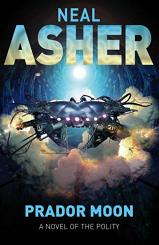A Game of Thrones to be filmed for tv …in Belfast? Cue dry as dust press release:
First Minister Peter D Robinson MP MLA and deputy First Minister Martin McGuinness MP MLA, have confirmed that HBO, the USA’s leading pay cable network, will film a TV pilot in Northern Ireland this year.
‘A Game of Thrones’, is scheduled to arrive in the third quarter of 2009 and is set to be an epic project. It is expected that the production will utilise various locations, as well as build a massive set in the Paint Hall.
Mr Robinson said: “This is the first time that a TV production of such vast size and scale has been filmed in Northern Ireland. The announcement comes following the visit by the deputy first Minister and I to Los Angeles in March. It will be a welcome boost to the production sector, helping develop the industry here and bringing employment and investment to Northern Ireland.
(Incidently, Paul Cornell, amongst others, is going to write for Martin’s Wild Cards series.
Samuel Delany on racism and science fiction:
Since I began to publish in 1962, I have often been asked, by people of all colors, what my experience of racial prejudice in the science fiction field has been. Has it been nonexistent? By no means: It was definitely there. A child of the political protests of the ’50s and ’60s, I’ve frequently said to people who asked that question: As long as there are only one, two, or a handful of us, however, I presume in a field such as science fiction, where many of its writers come out of the liberal-Jewish tradition, prejudice will most likely remain a slight force—until, say, black writers start to number thirteen, fifteen, twenty percent of the total. At that point, where the competition might be perceived as having some economic heft, chances are we will have as much racism and prejudice here as in any other field.
How to teach historical context via a single comic; that is, Planetary/Batman: Night on Earth.
Factor in the photorealistic gestures and that can only be the Batsuit of the 21st Century. But why did folks at DC decide to go with the throwback costume at the dawn of a new century? Nostalgia? What happened in 2000 that made the less cartoonish Batsuit more attractive to fans of the book? Because the subtraction of the shield was not the only change: the greys now skew black, the blues shift black-navy, and the yellow of the utility belt pales to a washed and muted gold.
